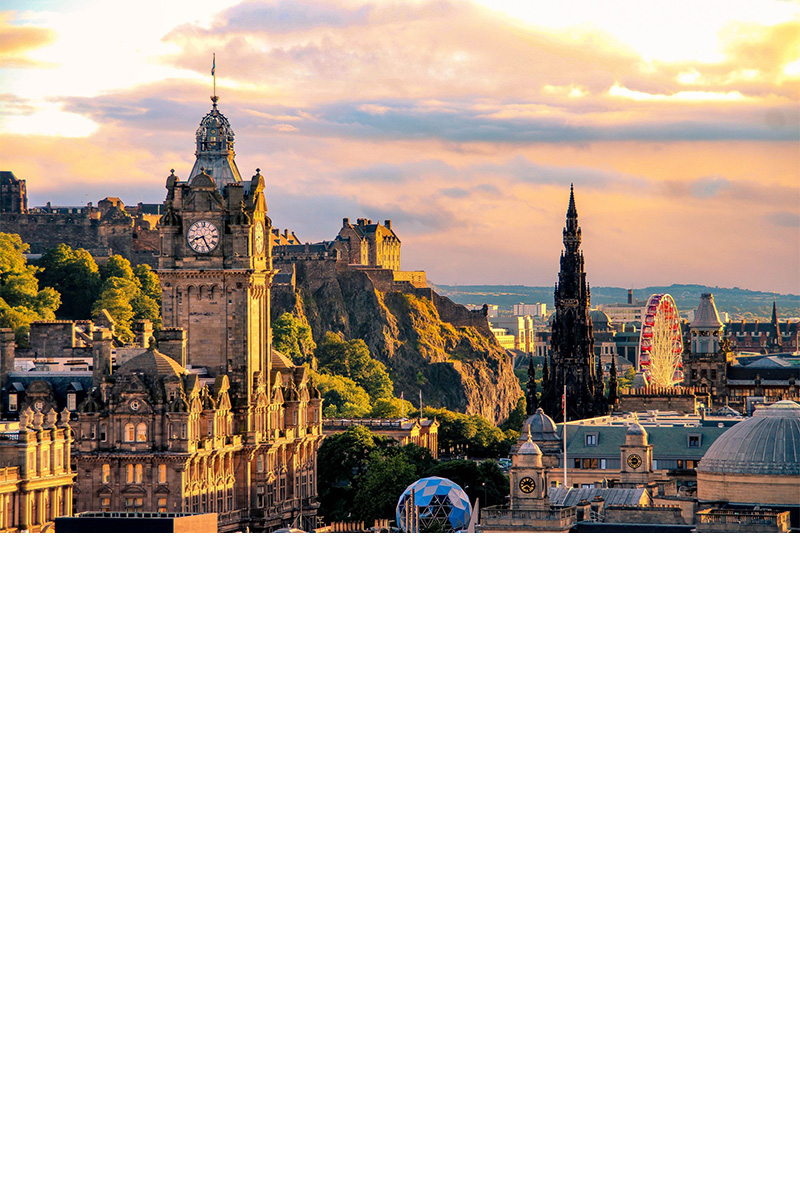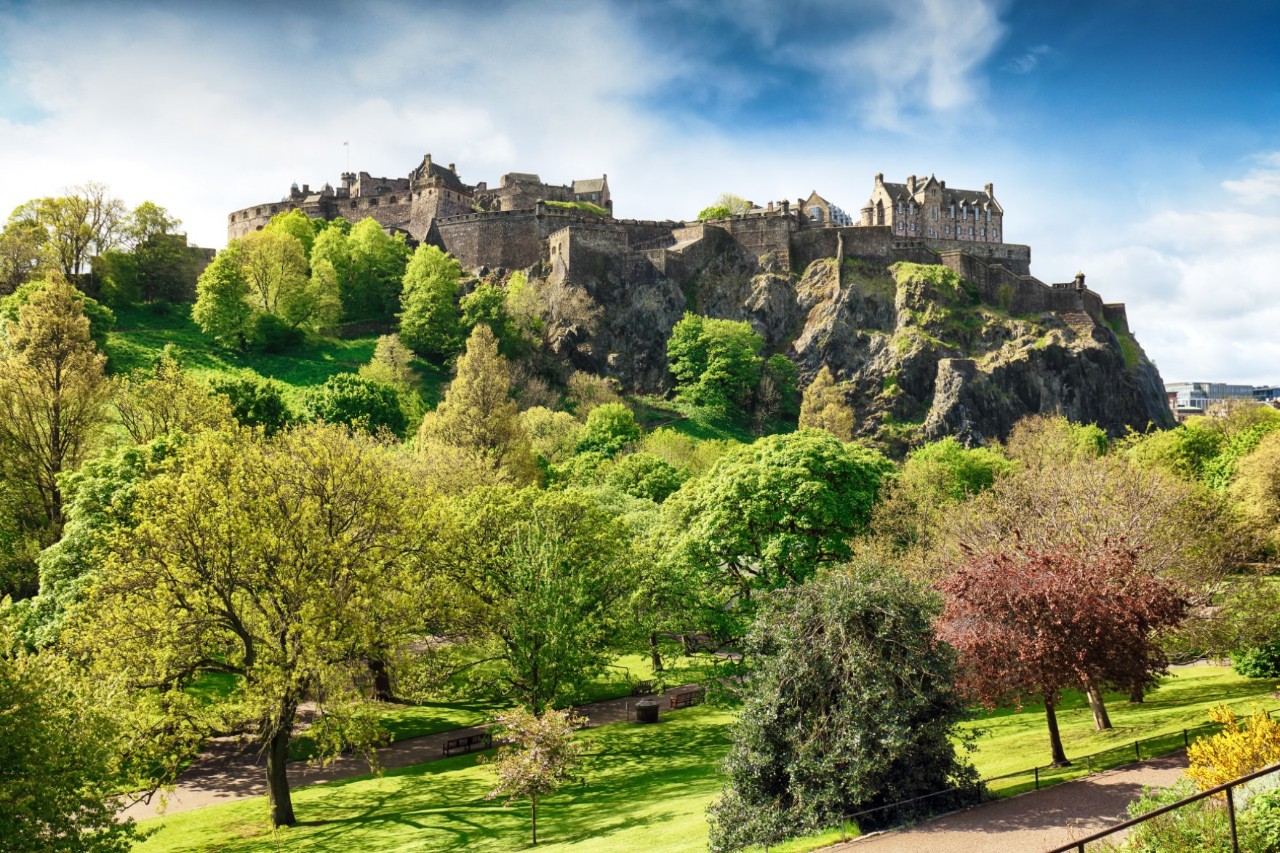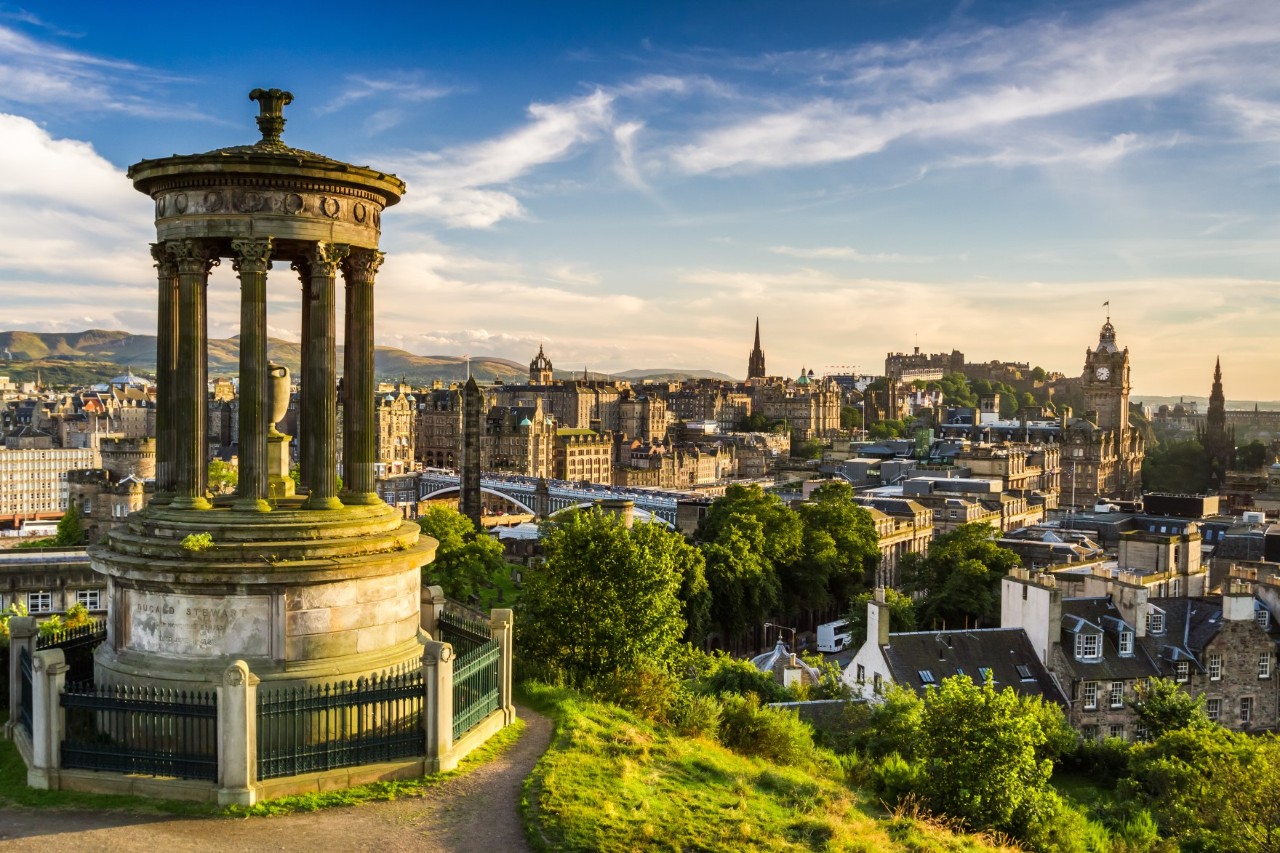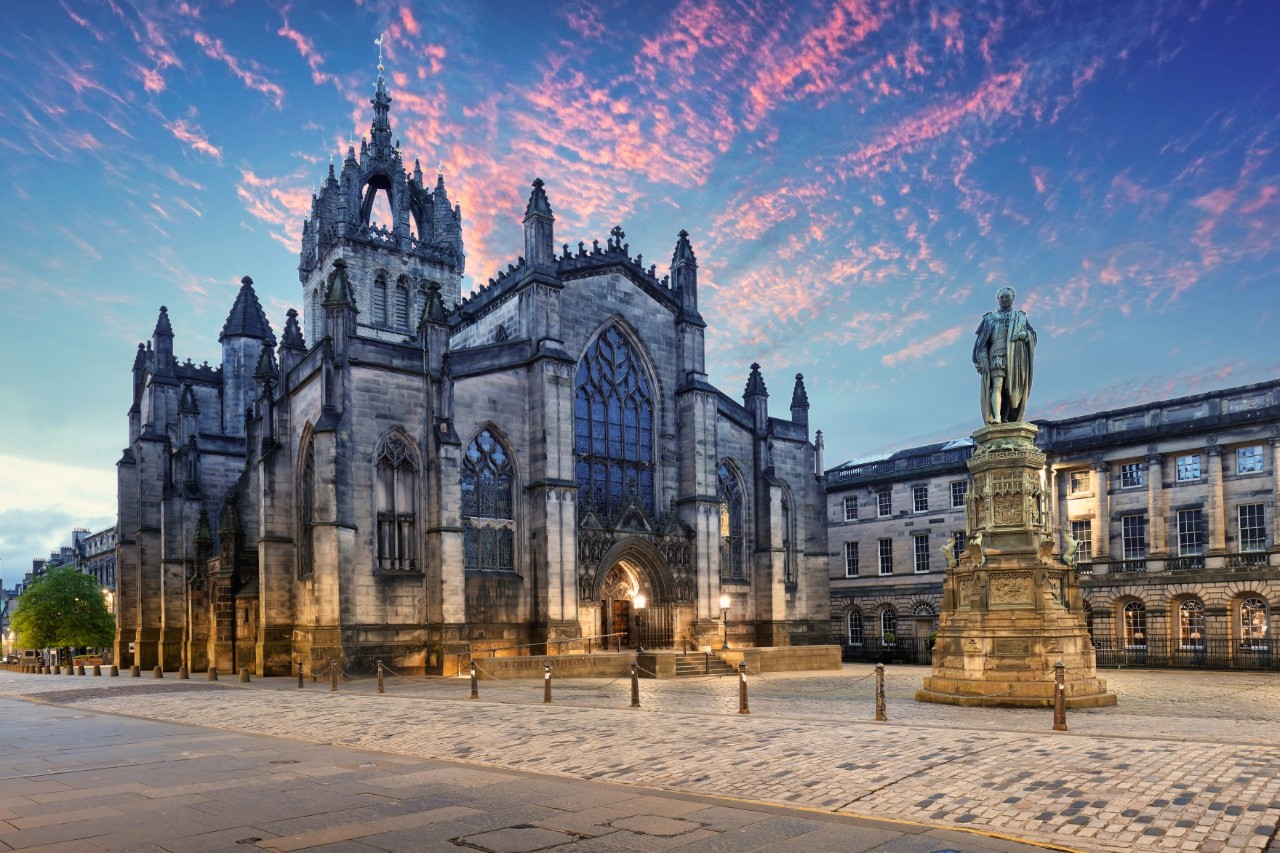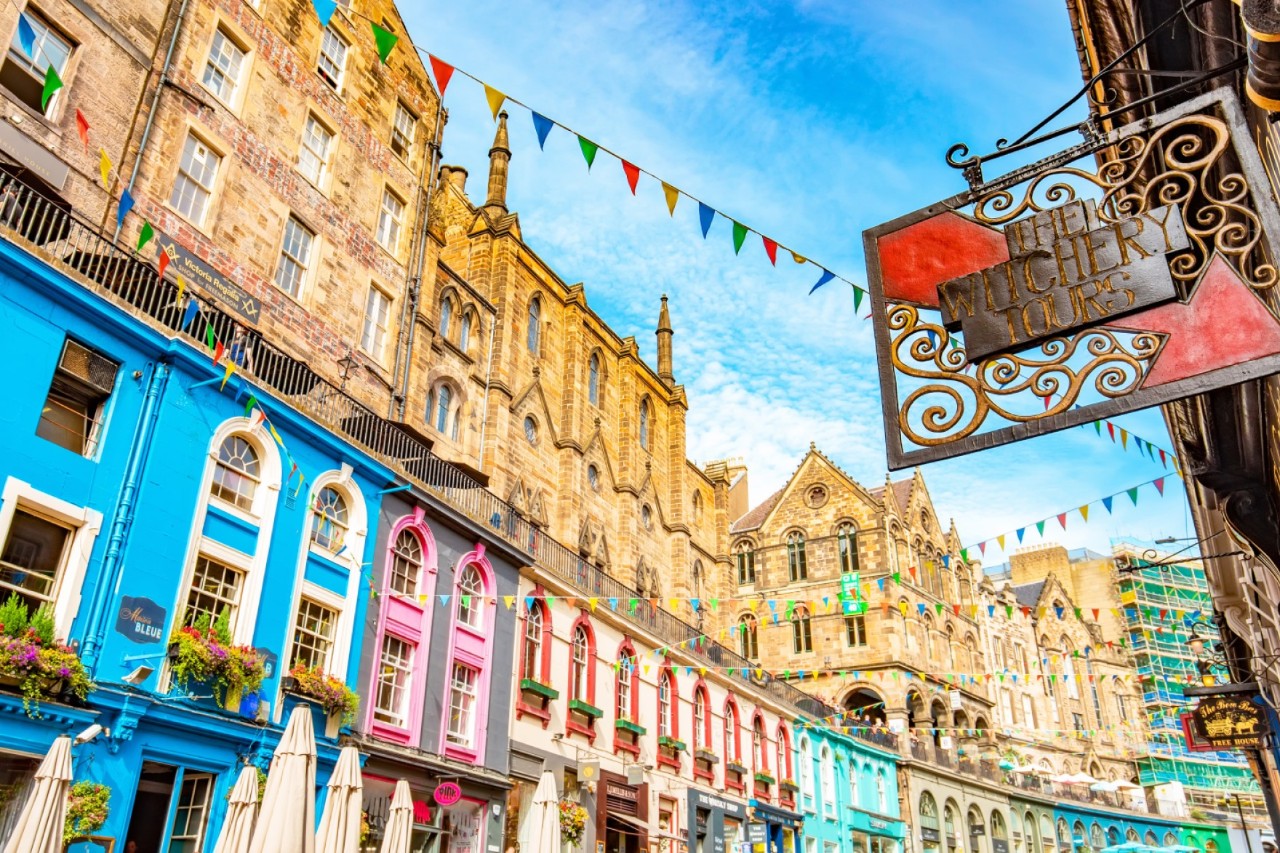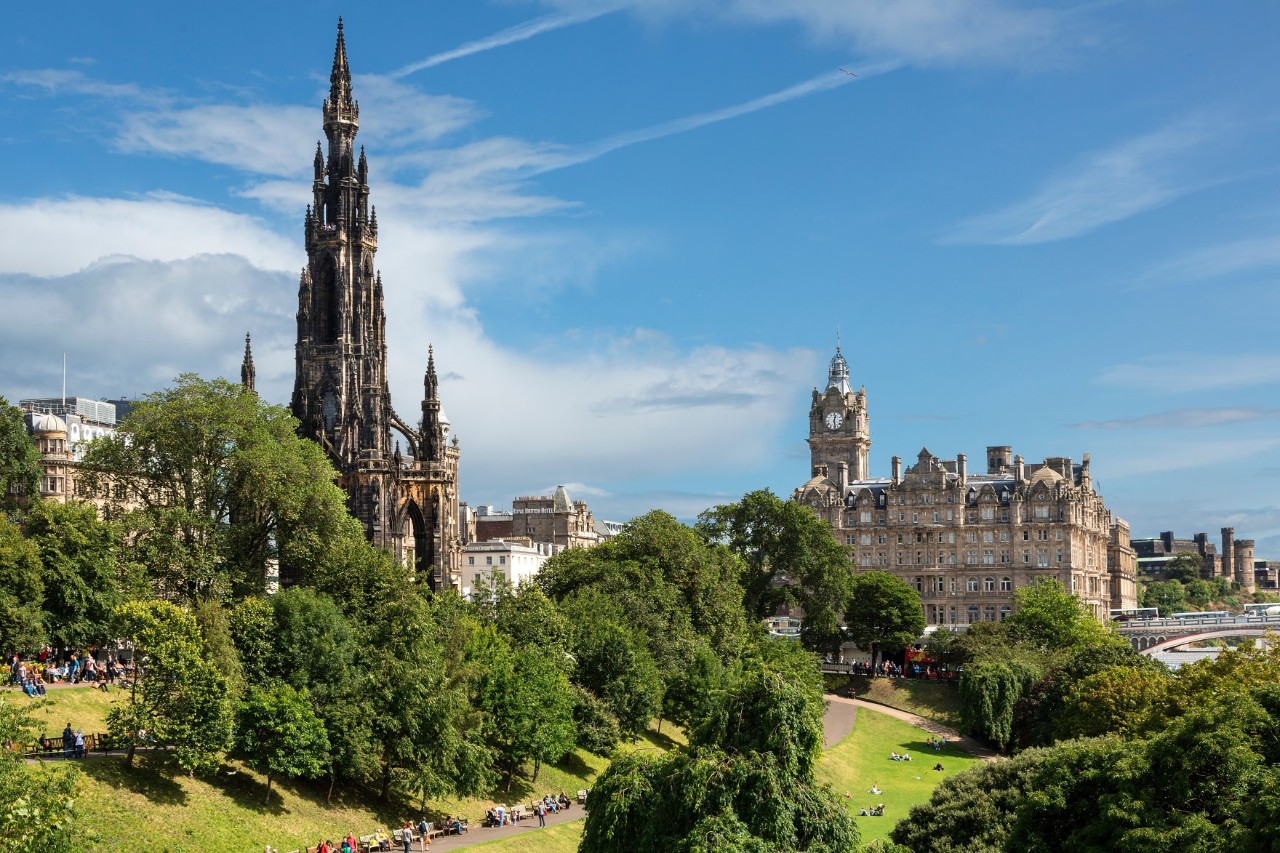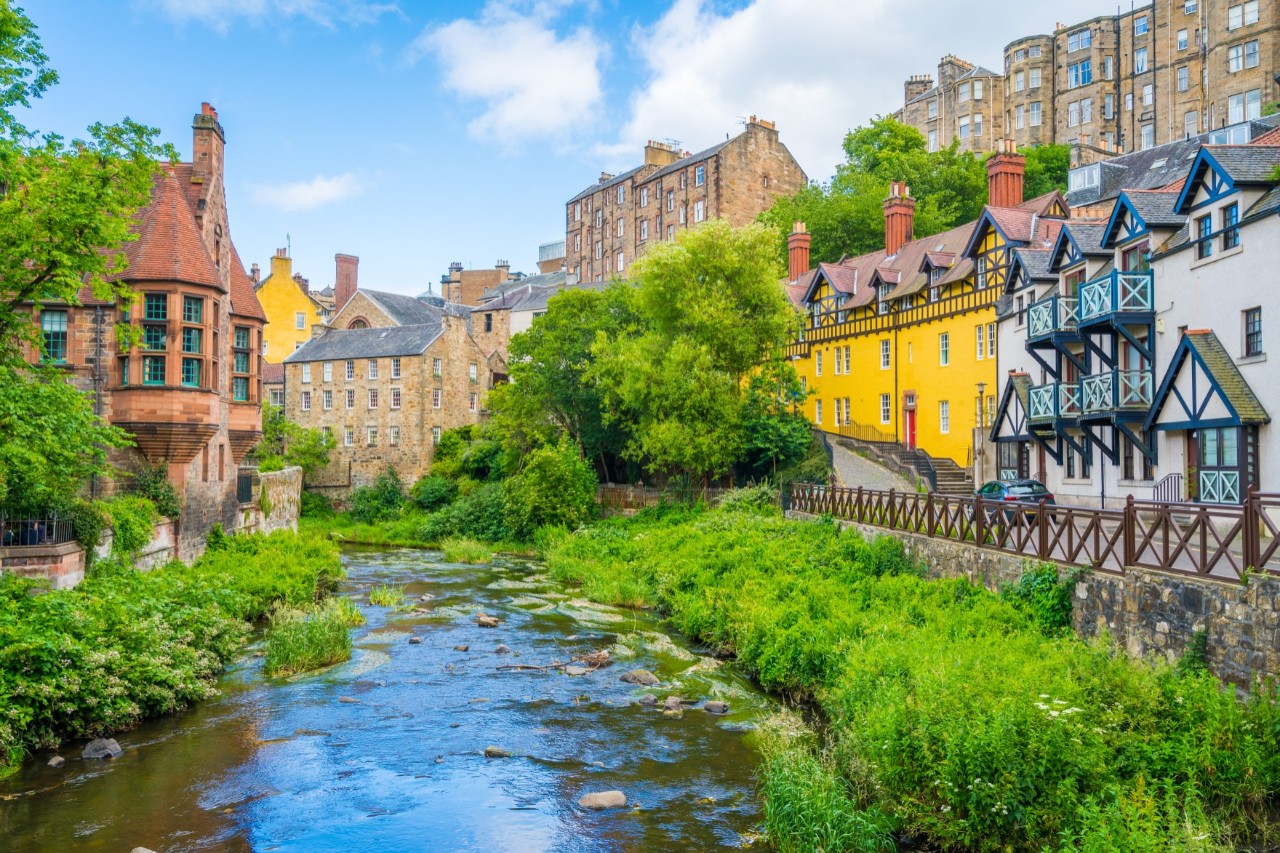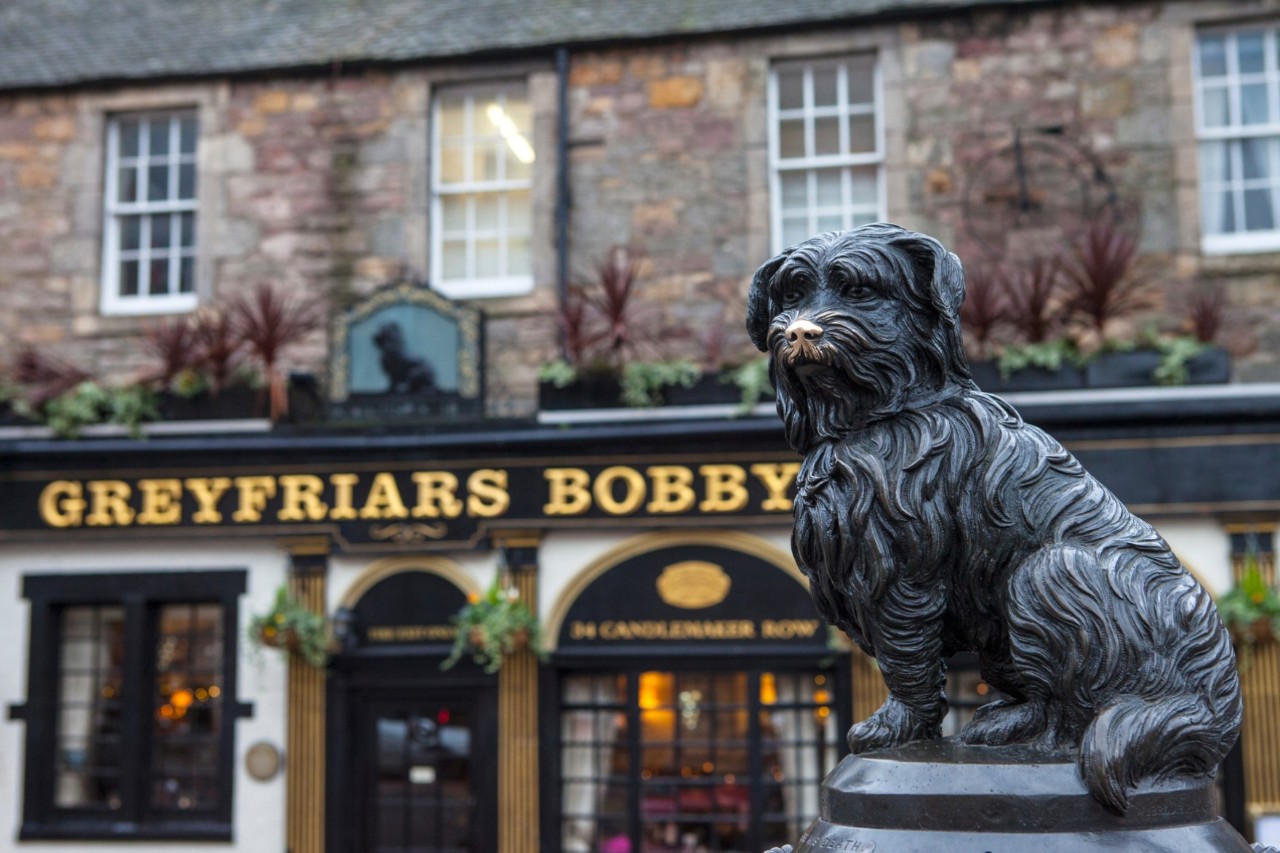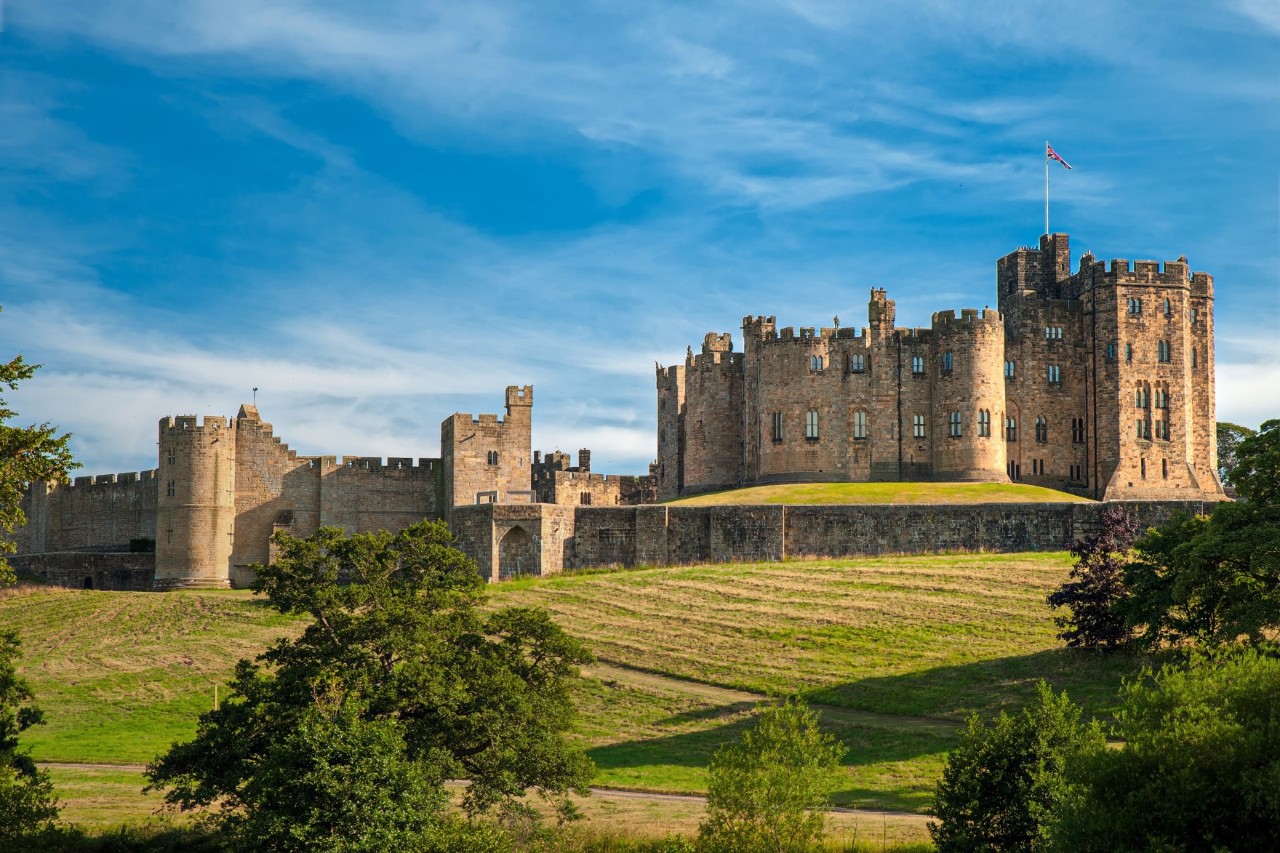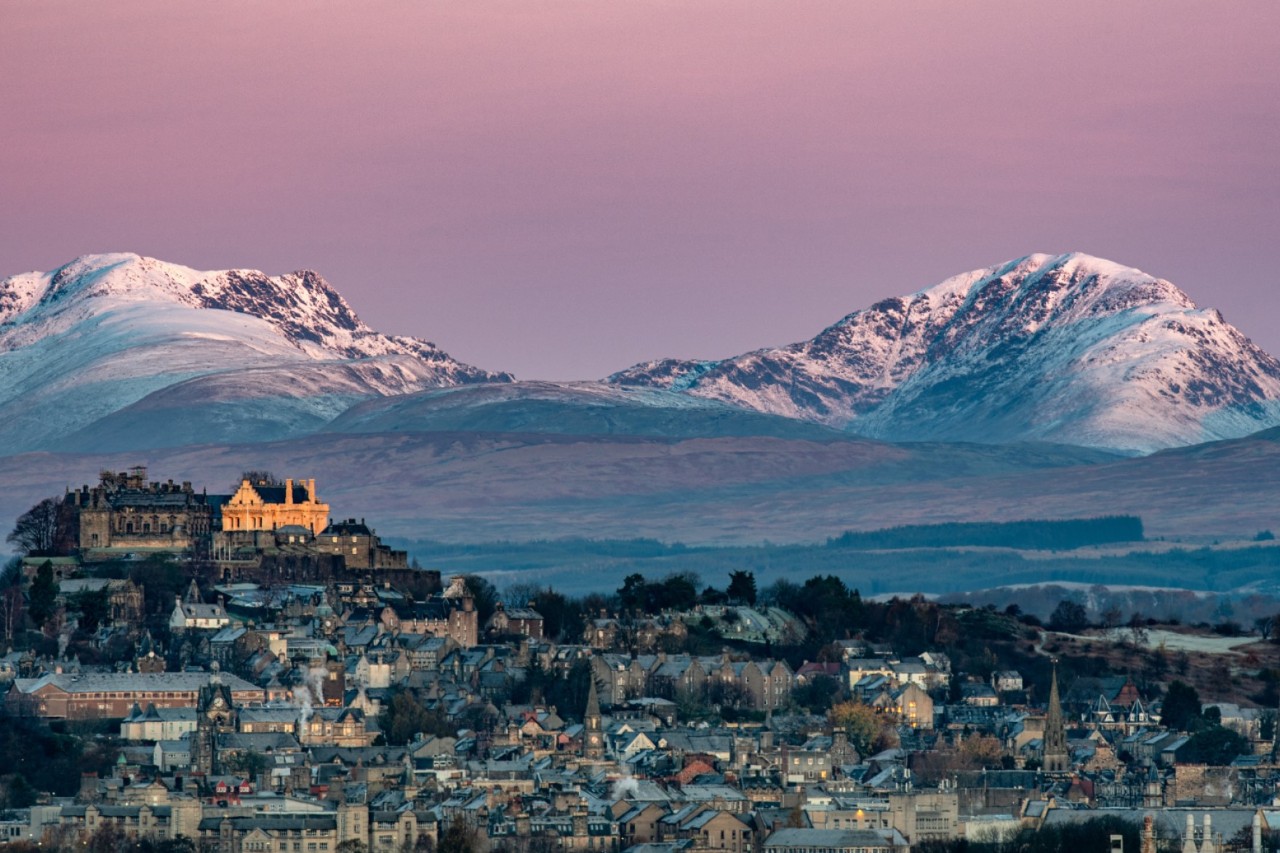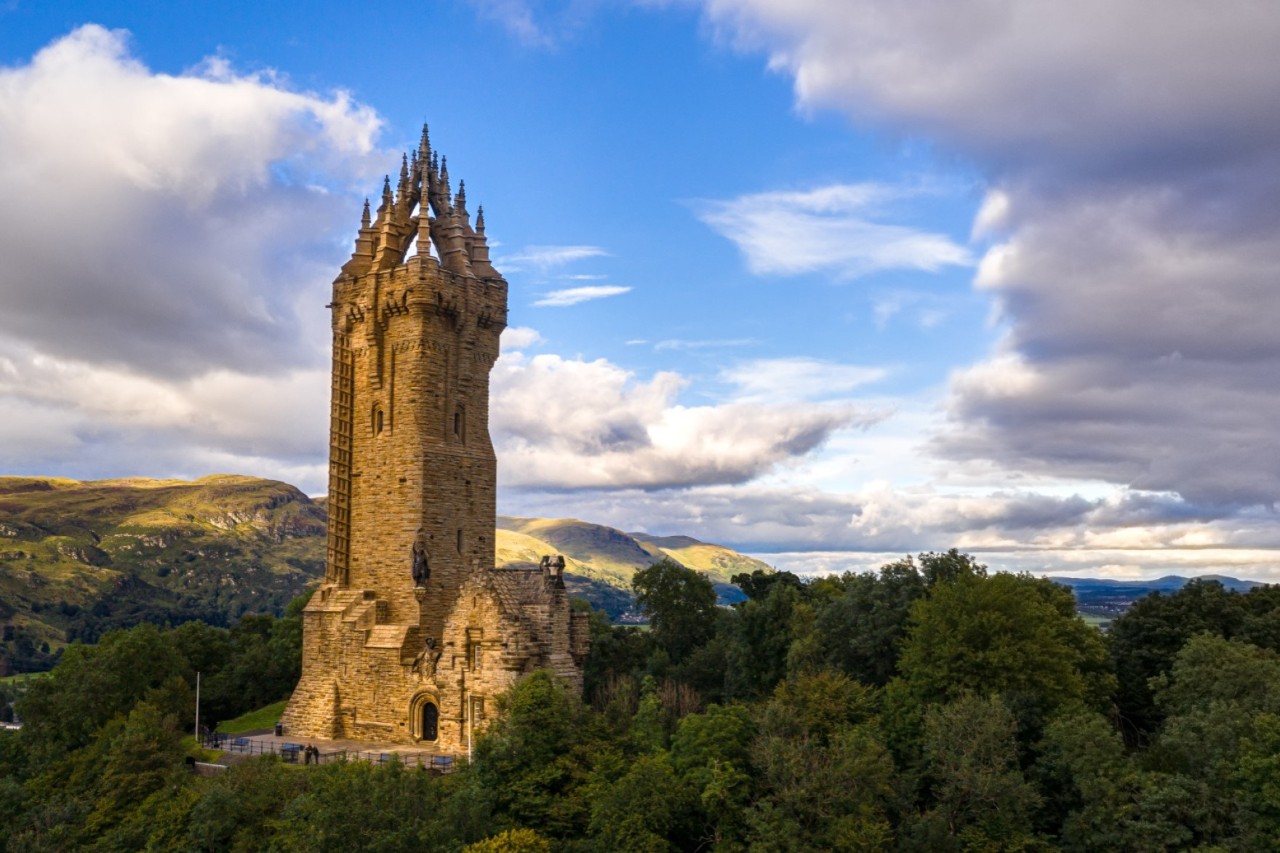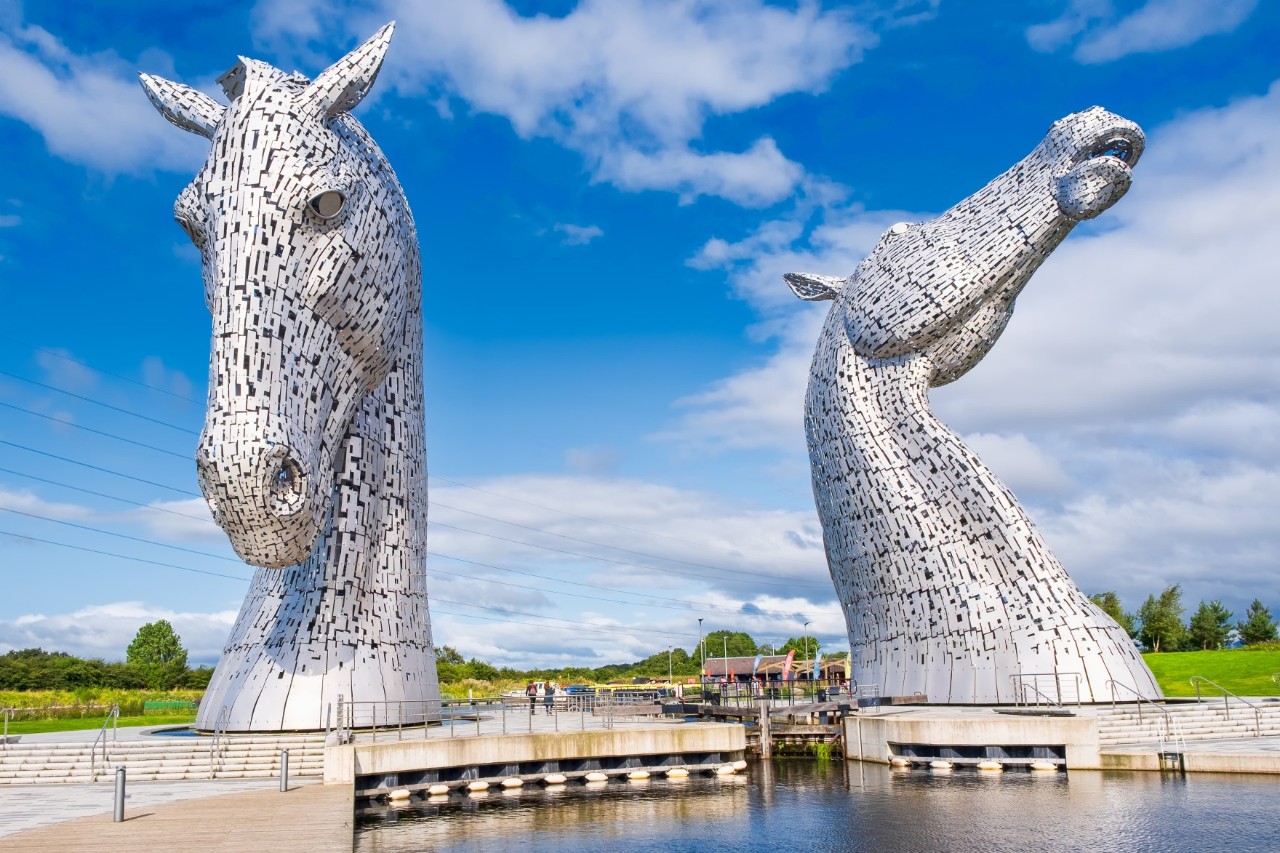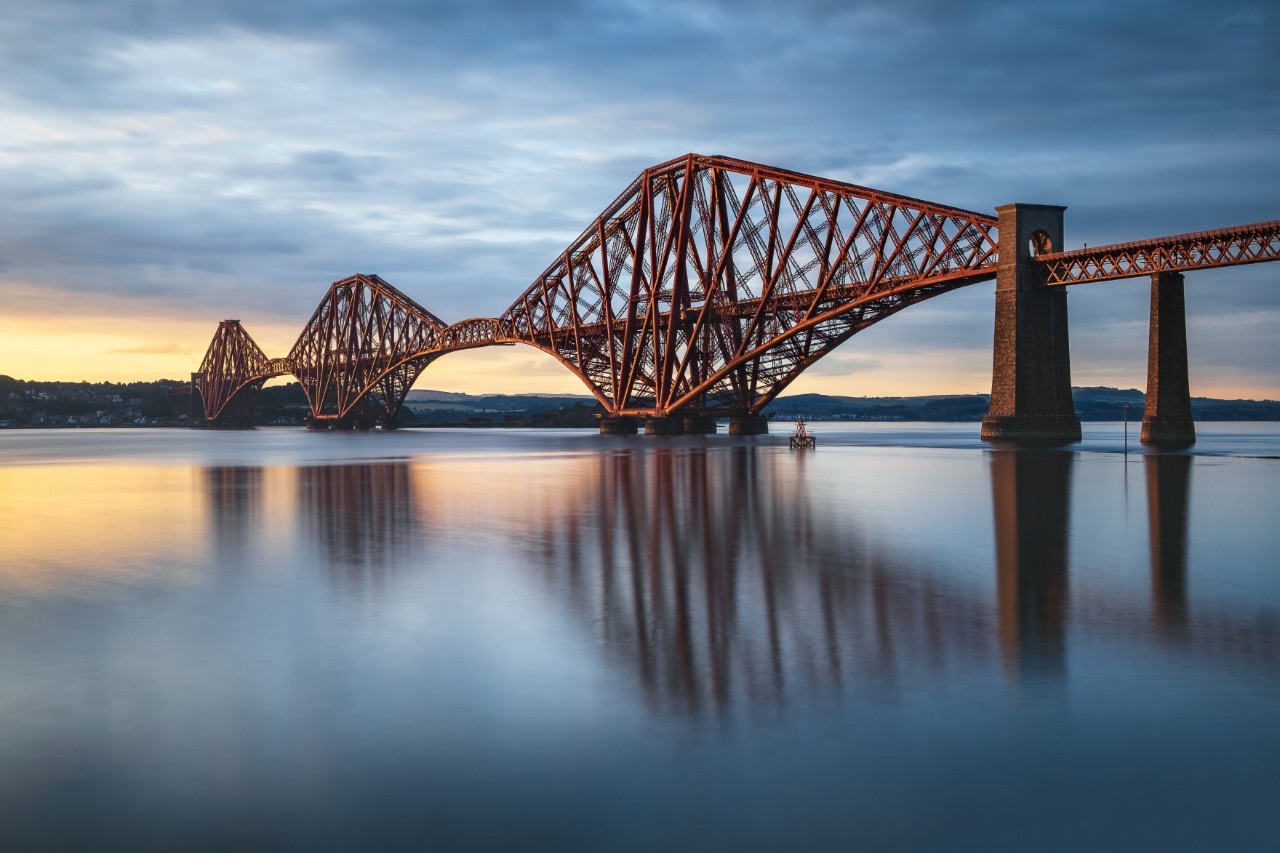City of Literature with Fear Factor
What do Sherlock Holmes, Harry Potter and Dr Jekyll and Mr Hyde have in common? Their authors were all inspired by Edinburgh’s medieval streets, dark past and ghost stories. Edinburgh is famous for its Old Town with historic walls and narrow, dark alleyway, such as Mary King’s Close, but also for the numerous festivals in the summer. The world’s largest arts festival, the Fringe, attracts millions of visitors in August with theatre, comedy and performing arts, as does the Royal Military Tattoo music festival with its singers, dancers and traditional military and bagpipe music.
Scotland’s capital is located at the foot of the local mountain, Arthur’s Seat. The Royal Mile runs through the Old Town in the centre of Edinburgh and is home to many of the city’s major attractions. It begins in the west at the majestic Edinburgh Castle, which overlooks the entire city on Castle Rock, an extinct volcano. Heading east, the Royal Mile passes historic cathedrals such as the Tolbooth and St Giles, the University of Edinburgh, John Knox’s house and a multitude of small pubs, restaurants and gift shops. It finally ends at the Palace of Holyroodhouse, the official royal residence in Scotland, directly opposite the modern Scottish Parliament. The large-scale Princes Street Gardens, the two art galleries and Waverley railway station separate the medieval Old Town from the New Town, which was built as the population grew and the former Nor Loch was drained in the 18th century. There, on the popular Princes Street, you will find the Scott Monument, the luxurious 5-star Balmoral Hotel and endless shopping opportunities.
Numbers, data, facts
- Time difference: - 1 hour
- Population: 527.620
- Official language: English
- Currency: Pfund Sterling (GBP)
10 Highlights in Edinburgh
Discover Edinburgh’s surrounding areas
Edinburgh is located in the Lowlands on the east coast of Scotland and is the second largest city (after Glasgow) in the largely autonomous part of the United Kingdom. In the north, the Highlands with their craggy mountain landscape, the many lakes, such as Loch Ness and Loch Lomond, and the deep, impressive valleys, also called “glens”, are the perfect place to hike and relax. In contrast, the Lowlands are characterised by gentle, endless hilly landscapes. History fans can explore over a thousand palaces and castles, from magnificent fortresses to abandoned ruins built due to rivalries and wars between enemy clans and on the Scottish Borders. Smaller towns such as Stirling, with Stirling Castle, or St Andrews, the home of golf, are perfect for a day trip.
Scotland from its most beautiful side
Edinburgh from BER
- Airlines flying to Edinburgh
- Airports from BER
Five travel tips for …
- See The Elephant House café, the “birthplace” of Harry Potter
- Have a drink at the Deacon Brodies Tavern pub, the inspiration for Dr Jekyll and Mr Hyde
- Visit the International Book Festival
- Take a trip to the Writers’ Museum
- Explore the filming locations for the screen adaptation of “Outlander”
- Take a visit to the spooky dungeon
- Ride through the city on the Ghost Bus and listen to scary stories
- Discover the catacombs and underground passages
- Get scared on one of the guided midnight scary tours
- Get spooked in the dark at Greyfriars Kirkyard
- Try haggis, probably the most famous Scottish dish: a sheep’s stomach stuffed with offal and oatmeal
- Fried eggs, toast, bacon, baked beans, hash browns, sausages, black pudding, scones, mushrooms and grilled tomatoes: a Scottish breakfast
- Eat a shortbread biscuit – a tea time snack
- Enjoy a cranachan with whisky, honey, oats and raspberries for dessert
- Learn about making whiskey at a distillery
Picture source title: © evenfh / stock.adobe.com
The information published on this page is current as of the date of publication or update.

